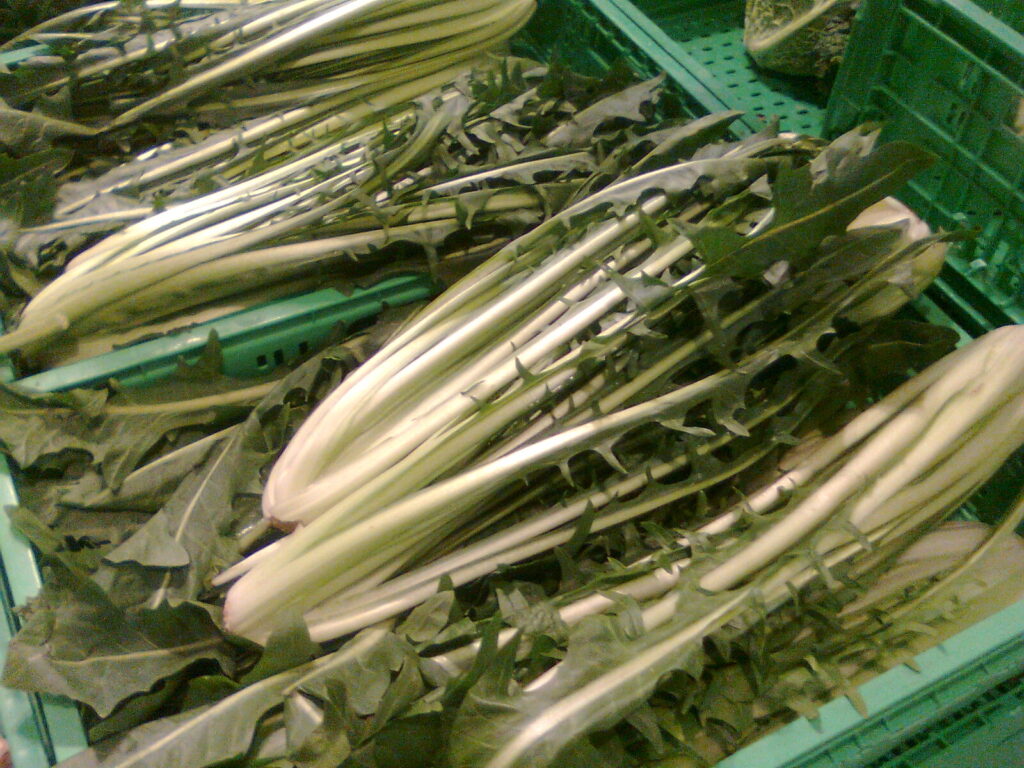Chicory has escaped gardens and naturalized in many parts of North America with milder winters. It is
recognized along roadsides and in vacant lots by it’s beautiful blue daisy-like flowers, which wilt almost
immediately after being picked. It does not transplant well into the garden because it is a biennial and by
the time it flowers it is almost at the end of its life cycle. Wild chicory is edible and it is worth gathering
the seed from the wild to see how the resulting plant performs in the garden. In addition to growing for
food, It can also be grown as a garden flower.
Leaving some chicory in the garden in milder climates will result in flowering, seeding and self-sowing in
the second year.
Regarding varieties in the Cichorium family, this group of bitter greens is often confused because of the
many names. Different names are even given to the same species depending on how the plant is
grown, and in the case of the Belgian variety, called “endive” in North America but botanically grouped
as chicory. The various names for the assorted Cichoriums include: Common chicory (succory,
coffeeweed) Sugarloaf; Belgian (French) endive; Radicchio (red chicory, Italian chicory), of which there
are several Italian-named varieties.
The common name “endive” can refer to Cicorium endivia, a biennial species which is usually grown as
an annual leafy salad green. The species C. endivia is available in two leaf types, depending upon the
variety. The loose leaf salad green with narrow, curly leaves is usually marketed as “endive,” “curly
endive,” or “Frisee.” Broadleaf varieties are often referred to as “escarole,” “Batavian endive,” “grumolo,”
or “scarola.”
Radicchio, also called Italian chicory, this red leaf, head-forming type of chicory is popular in salad mixes
and Italian cooking.
Italian Dandelion chicory – Quite similar in appearance to the leaves of dandelion weeds (Taraxacum
officinale), this variety forms dense heads of bitter greens used in fresh salads and for cooking. It can
also be marketed as leaf chicory,
Catalogna, or asparagus endive. Puntarelle – These young, tender shoots or hearts of the chicory plant
lack the leafiness of mature foliage. It is also called Catalogna di galatina, ciorcia asparago, or ciorcia di
Catalogna.
Common chicory – A wild variety of the European C. intybus species, this plant’s bright blue flowers dot
roadsides and fields across the United States. The dandelion-like leaves of common chicory are edible.
Chicory root – Coffee or coffee additives are made by roasting, grinding, and brewing the taproots of C.
intybus varieties such as Magdeburg or Italian dandelion. This hot beverage originated in France during
a coffee shortage in the 1800’s. It has since become popular around the world. Common names include
‘large rooted chicory’ and ‘chicoree a café’.
Chicon – These tight-headed, leafy delicacies are produced by forcing various varieties of C. intybus
roots. Chicons are also marketed as French endive, Belgian endive, white endive, Dutch chicory, or
witloof chicory.






